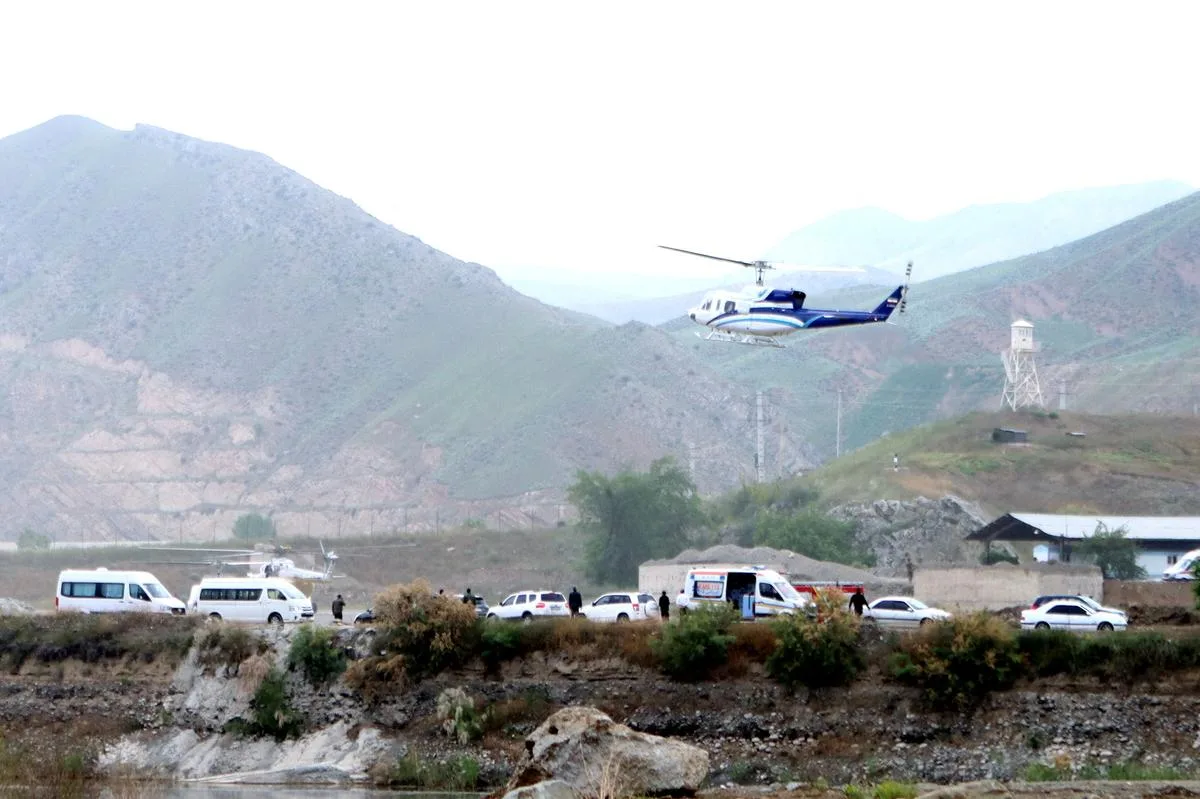
Live updates on the death of Iran’s foreign minister and president, May 20:
According to Reuters, which cited official media, Iranian President Ebrahim Raisi and his Foreign Minister Hossein Amir-Abdollahian perished on Sunday after their helicopter “crashed” in the country’s hilly northwest. Prime Minister Narendra Modi was among the world leaders who expressed their sorrow over the loss of the leaders. Supreme Leader Ayatollah Ali Khamenei stated that First Vice President Mohammad Mokhber will lead Iran’s executive branch after Raisi’s passing in accordance with the constitution.
Helicopter carrying Raisi, Amir-Abdollahian, and other officials ‘crashed’ on Sunday while flying over mountainous terrain in dense fog, initiating a protracted search and rescue mission. The foreign minister of Iran and other officials were returning from a trip to the northwest Iranian border with Azerbaijan. The nation’s media had stated during the rescue operations that they had discovered “no sign of life” at the accident site. The media has attributed the disaster to unfavorable weather and said that it has complicated relief efforts.
Also Read : http://the-delhi-traffic-police-releases-a-special-warning-avoided-routes-between-4-and-8-p-m
The disaster occurs at a time when Iran is dealing with a number of difficulties, including international backlash over its support for Hamas and its strengthening military connections with Russia during the conflict in Ukraine, as well as disapproval over a number of political and economic issues. Israel and Iran’s ties were even more tense last month after both countries launched attacks on the other’s territory. Meanwhile, Iran is also going through a transition phase, having elected a new, hardline government in March.
According to Iranian media, Iran President Ebrahim Raisi died on Sunday in a helicopter crash in the region of East Azerbaijan. Over a mountainous area, the helicopter carrying Iran’s President Raisi and his Foreign Minister Hossein Amir-Abdollahian vanished.
Iran’s national media reported that there was “no sign” of life among the occupants of the helicopter. “Upon finding the helicopter, there was no sign of the helicopter passengers being alive as of yet,” according to state television.
After a period of increased tensions in the region, especially because of the Gaza conflict and Iran’s recent escalation with Israel, this incident occurred. Having taken office in 2021, President Raisi has repeatedly reaffirmed Iran’s unwavering support for Palestine in his recent speech to inaugurate a dam.
Iran’s official media released footage.

What is known about the president of Iran that was aboard the downed helicopter?
Iran’s president and foreign minister were aboard a Bell 212 helicopter that was traveling through dense fog and mountains. According to Reuters, it is a civilian variant of the widely utilized UH-1N “Twin Huey” from the Vietnam War that is operated by both governments and private companies worldwide:
After a period of increased tensions in the region, especially because of the Gaza conflict and Iran’s recent escalation with Israel, this incident occurred. Since taking office in 2021, President Raisi has vowed Iran will always back Palestine.
According to Reuters, which cited an Iranian official, Iranian President Ebrahim Raisi passed away on Sunday when his helicopter “crashed” in Iran’s hilly northwest. There is “no sign of life” at the accident scene, according to early reports from the nation’s state television media. Also Read:-https://livendtv.com/rohit-hardik-to-was-nita-ambanis-direct/
According to Iranian state media, a Bell 212 helicopter carrying Iran’s president and foreign minister crashed on Sunday while it was flying through mountains in dense fog. As search teams found the wreckage on Monday, an Iranian official stated that all were thought dead.
The civilian equivalent of the ubiquitous UH-1N “Twin Huey” from the Vietnam War, they are widely used by both governments and commercial operators worldwide:
The aircraft, an upgrade of the original UH-1 Iroquois, was built in the late 1960s for the Canadian military by Bell Helicopter (now Bell Textron, a component of Textron Inc.). With two turboshaft engines instead of one, the new design could carry more weight. According to U.S. military training materials, the helicopter was debuted in 1971 and was rapidly adopted by both the United States and Canada.





































